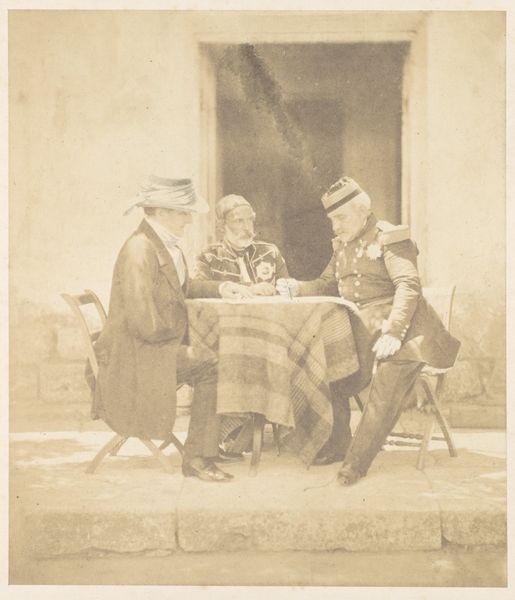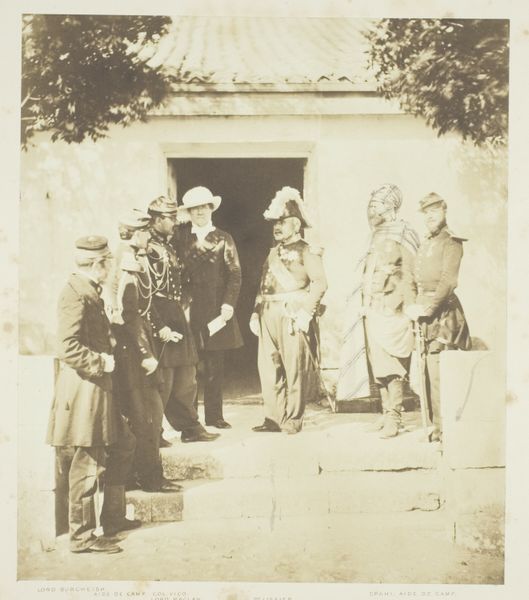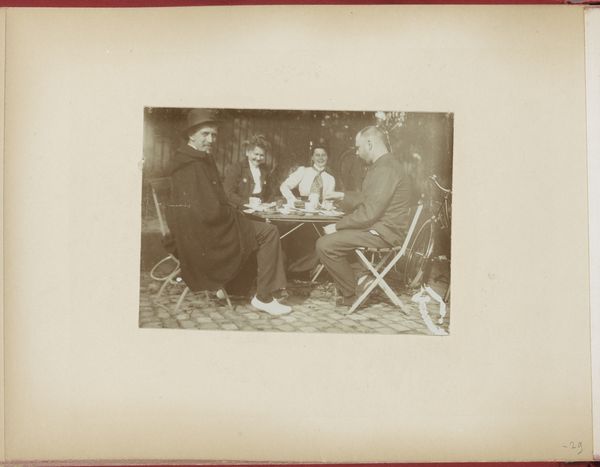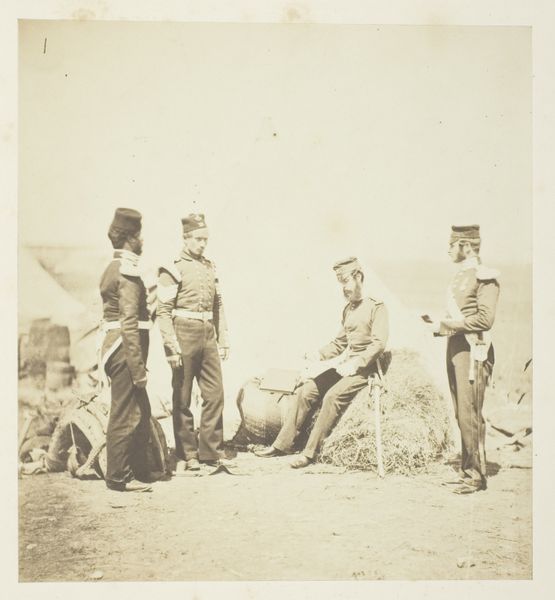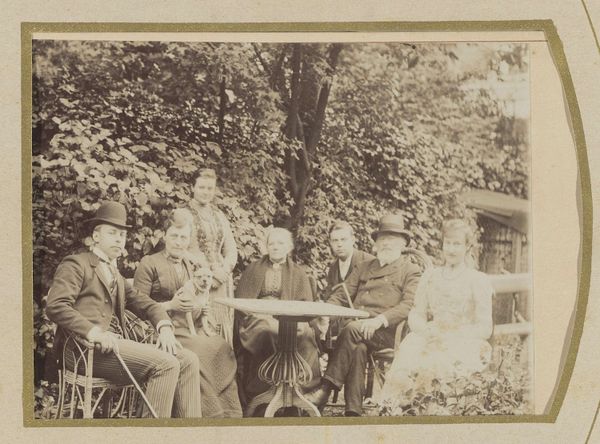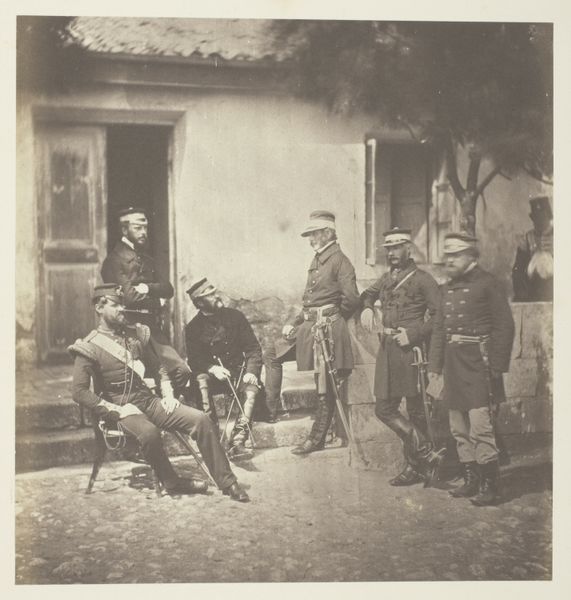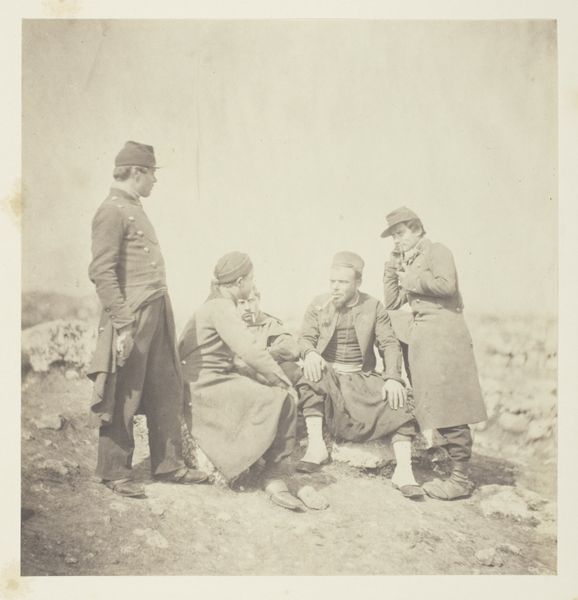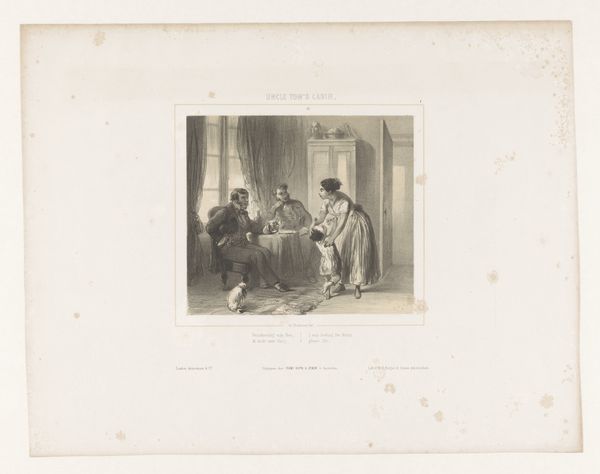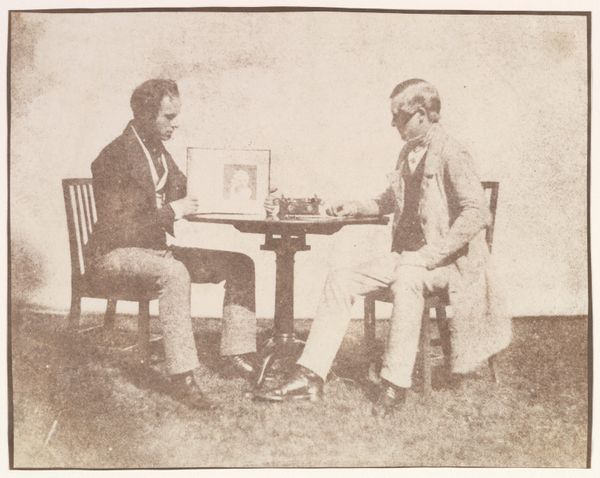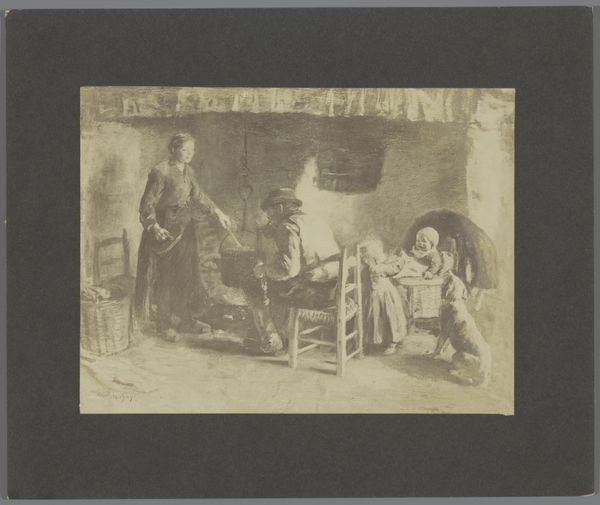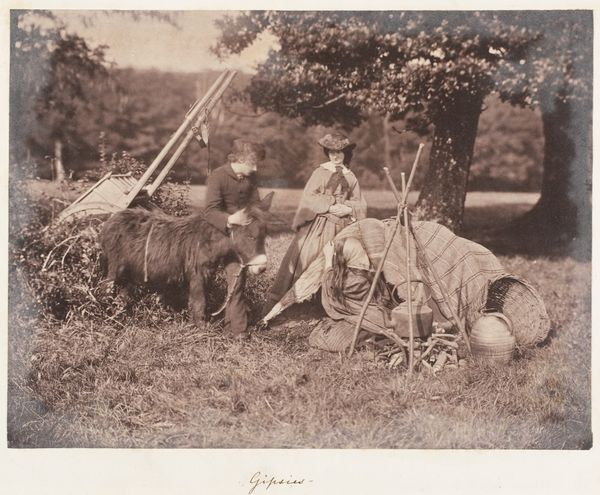
A Council of War: Lord Raglan, Omar Pacha and Pelissier, Taken the eve Before the Taking of the Mankelen, Crimea 1855
0:00
0:00
print, photography, gelatin-silver-print
#
portrait
#
print photography
#
16_19th-century
# print
#
war
#
archive photography
#
photography
#
historical photography
#
group-portraits
#
gelatin-silver-print
#
men
#
academic-art
Dimensions: 18.7 × 16.6 cm (image/paper); 26.9 × 21.6 cm (mount)
Copyright: Public Domain
Editor: This is "A Council of War" by Roger Fenton, a photograph taken in 1855. It features three military leaders, Lord Raglan, Omar Pacha, and Pelissier, and strikes me as staged but also intimate, like a snapshot from a historical drama. What do you see in this piece that connects to its time? Curator: It's crucial to consider how Fenton's photographs, including this one, operate within the context of the Crimean War and its public perception. Before Fenton, war photography was basically non-existent. News back home was filtered. Fenton was essentially commissioned to produce images that would maintain public support for a conflict that was becoming increasingly unpopular, partly because of bad decisions by these generals. Editor: So, this wasn’t just a straightforward depiction of events? Curator: Precisely. Think about what Fenton *didn't* photograph. He avoided the gruesome realities, the massive suffering of soldiers from disease and mismanagement. His photographs, while seemingly documentary, were carefully constructed to convey a particular narrative, one of leadership and purpose. It begs the question: Who does this photograph really serve, the soldiers or the government back home? How does this manipulation influence our reading of it? Editor: I see, it’s less about the reality of war and more about shaping public opinion of the war through imagery. Does that relate to why they’re positioned around a table like that? Curator: Exactly. Group portraits of military leaders weren't new, but the seemingly casual setting gives an air of calm deliberation, which is intended. This is a calculated image, designed to reassure the public of competent leadership at a time when such reassurances were desperately needed. Editor: I hadn’t considered the public relations aspect of this photograph. It provides such a different view of historical photographs, thank you. Curator: Understanding photography of this era demands that we think about intention, omission, and public consumption and their influence.
Comments
No comments
Be the first to comment and join the conversation on the ultimate creative platform.
